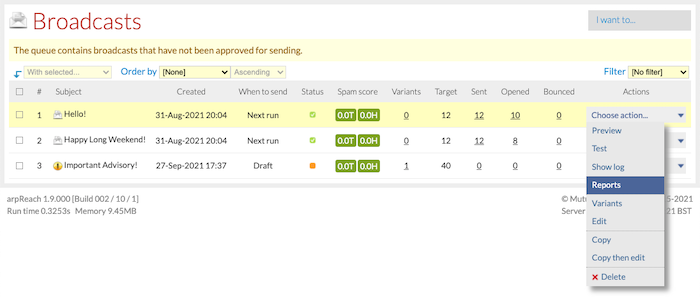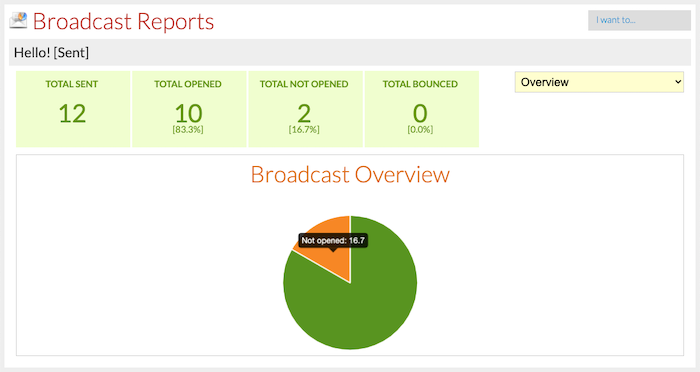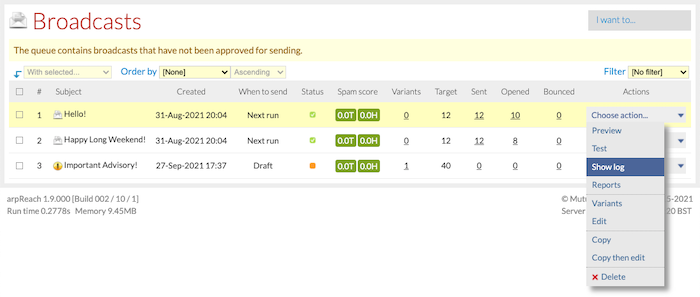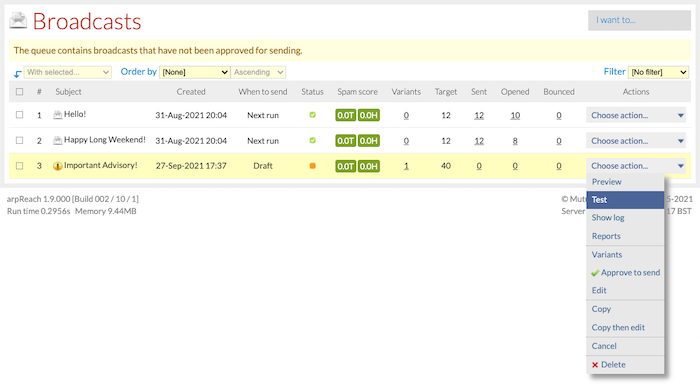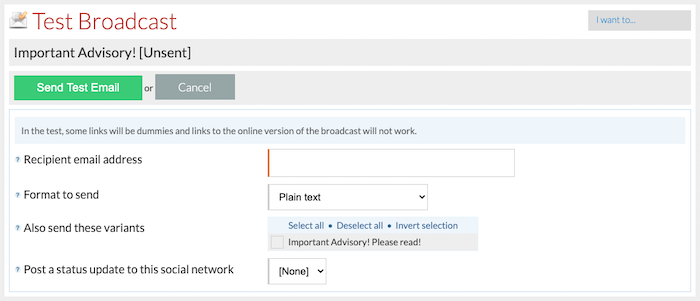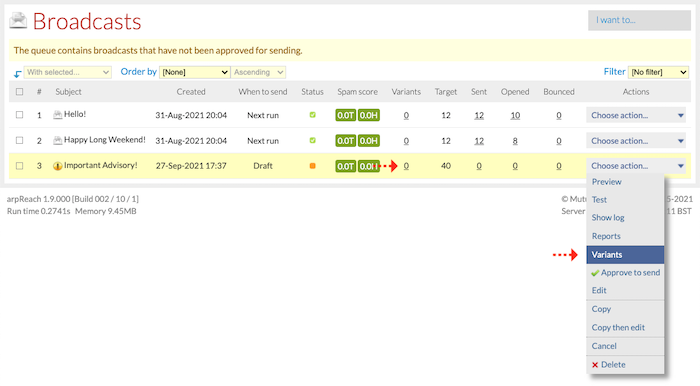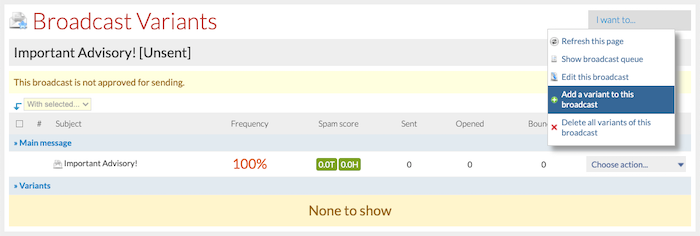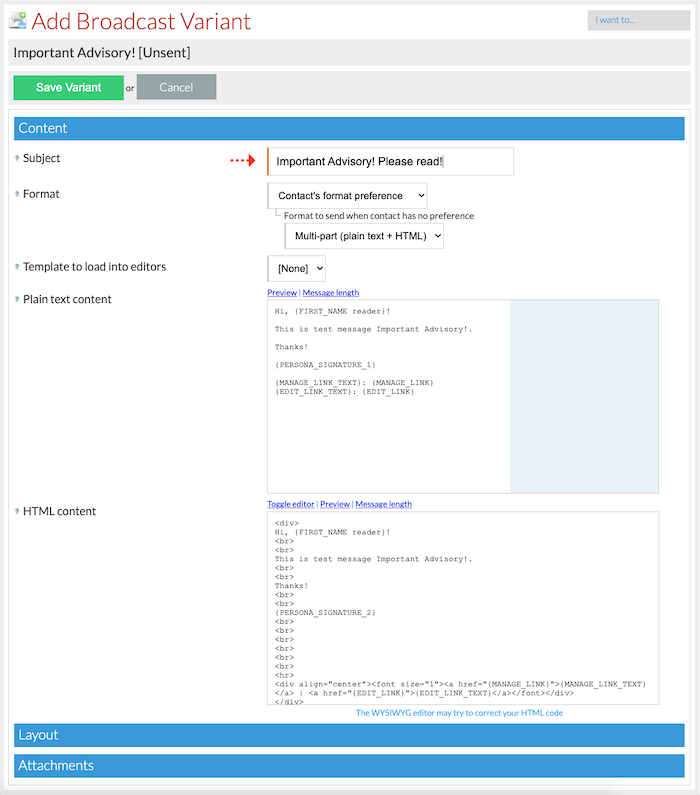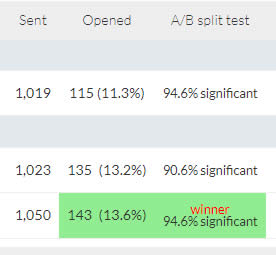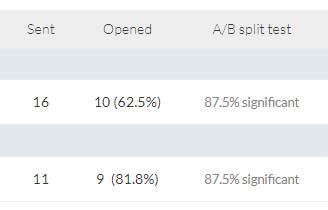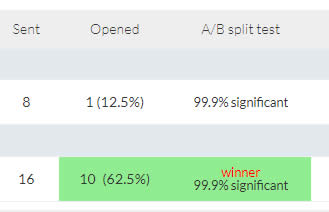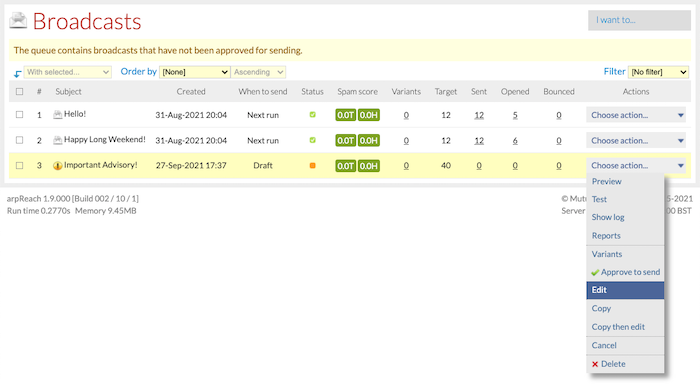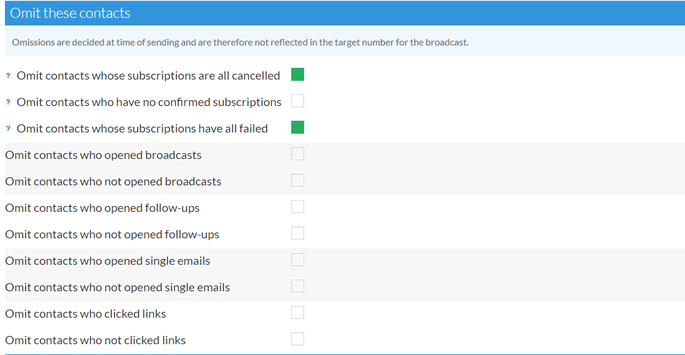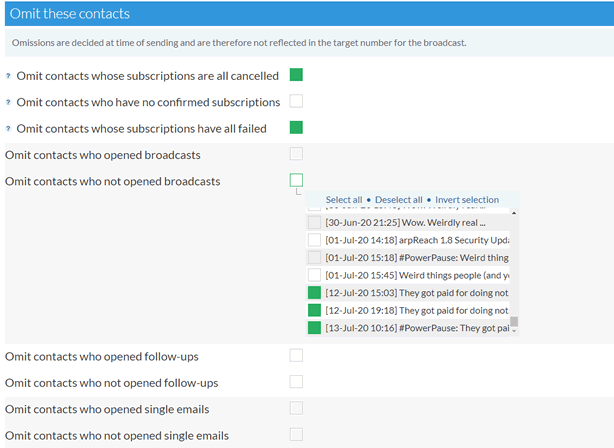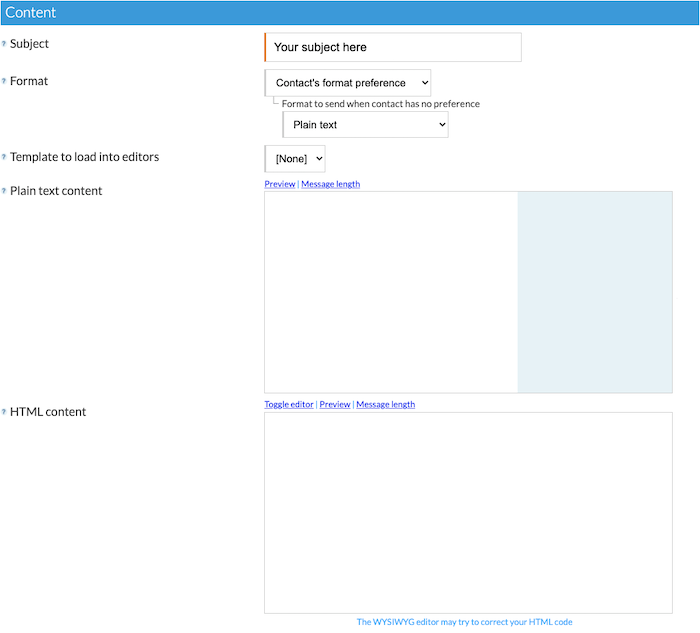Broadcast archives allow you to make your broadcast content available online and share it on social networks, via bookmark sites, and by RSS. Each broadcast can belong to as many of your broadcast archives as you wish.
“Archives make your broadcast content available online for sharing by social media and bookmarking sites”
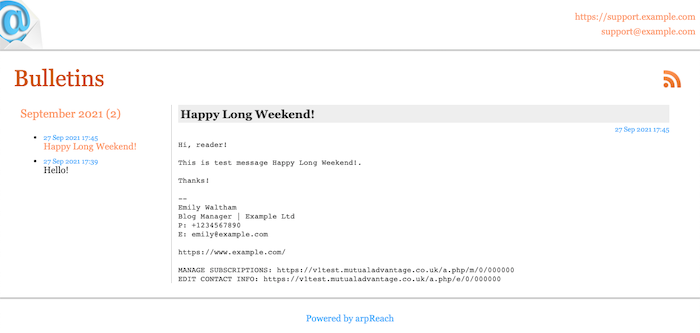
The above image shows a screenshot of a broadcast archive containing two (2) broadcasts. Broadcasts are automatically grouped by month and year.
To manage your broadcast archives, choose Broadcasts / Archives / Show List from the menu bar.

Click the Link or RSS icon to open the archive in a new browser tab or window.
![]()
You can then copy the URL from the browser’s URL bar for use on websites, blogs, emails, and social network status updates.
Creating / Editing a Broadcast Archive
To create a broadcast archive, choose Broadcasts / Archives / Create New from the menu bar:

… or choose Create an archive from the I want to… menu on the Broadcast Archives list screen:

When creating or editing a broadcast archive, the options are the same.
“Broadcasts must remain in the broadcast queue to appear in archives”
The Settings Tabs
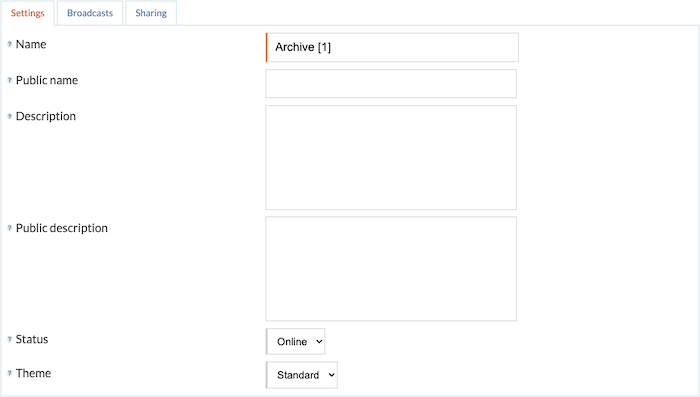
- Name – a name for the archive. This is for your use and does not appear on the archive itself.
- Public name – this is the name of the archive as it will appear on the archive itself. Leave this blank for no name to appear.
- Description – this is a private description of the archive. It does not appear on the archive itself.
- Public description – this description appears on the archive. Leave blank for no description to appear.
- Status – choose the online and offline status of the archive. The archive can be viewed only when the status is online.
- Theme – choose a theme for the archive as defined in Setup / System Settings / System / Contact Screens.
The Broadcasts Tab

- Broadcasts in archive – choose the broadcasts that will appear in this archive. Only broadcasts that remain in the broadcast queue will appear in the archive.
The Sharing Tab

- Enable sharing – check this box to enable social bookmark sharing icons in the archive. You need to sign up with a social bookmarking site such as AddThis.com and grab the HTML code from their site to paste into arpReach. These sites usually allow you to specify which web page their links will lead to. From the HTML code they give you to do that, you need to insert {url} instead of an actual URL so that arpReach can insert the correct link to the broadcast.
Here is an example code showing the use of {url} in HTML code supplied by the AddThis.com social bookmark site. This code is pasted into the Share/bookmark code box and will make the sharing options available in the archive view.
<!-- AddThis Button BEGIN -->
<div class=”addthis_toolbox addthis_default_ style” addthis:url=”{url}”>
<a class=”addthis_button_facebook_like” fb:like:layout=”button_count”></a>
<a class=”addthis_button_tweet”></a>
<a class=”addthis_button_google_plusone” g:plusone:size=”medium”></a>
<a class=”addthis_counter addthis_pill_style”></ a>
</div>
<script type=”text/javascript” src=”http:// s7.addthis.com/js/250/addthis_widget. js#pubid=ra-4f3d20933f35102a”></script>
<!-- AddThis Button END -->
- Enable RSS feed – check this box to enable the RSS icon on the archive screen so that visitors can add the archive’s RSS feed to their RSS reader or browser.
“Search the social bookmarking site for ways of promoting a custom URL then insert {url} so arpReach can link to the correct broadcast”

